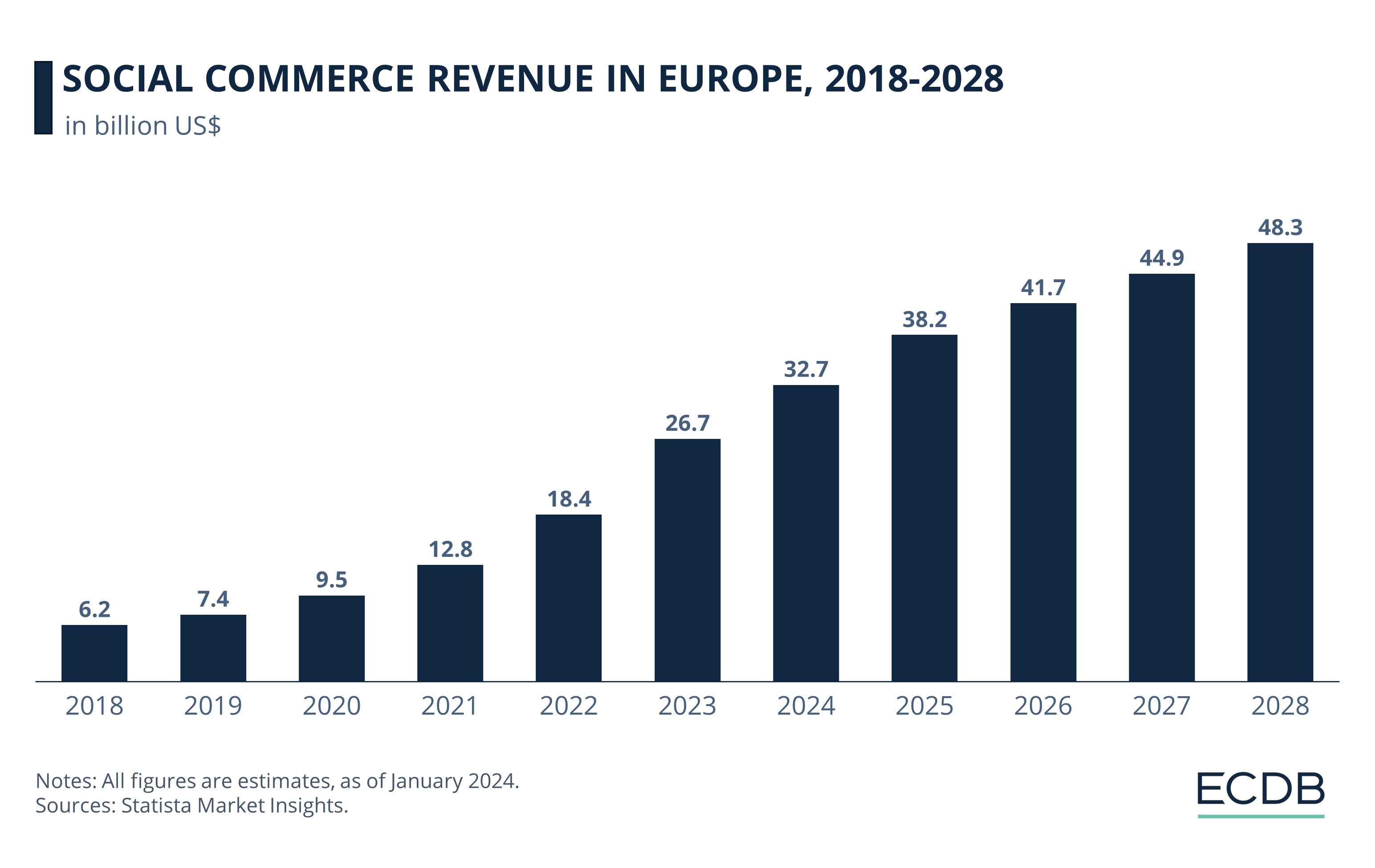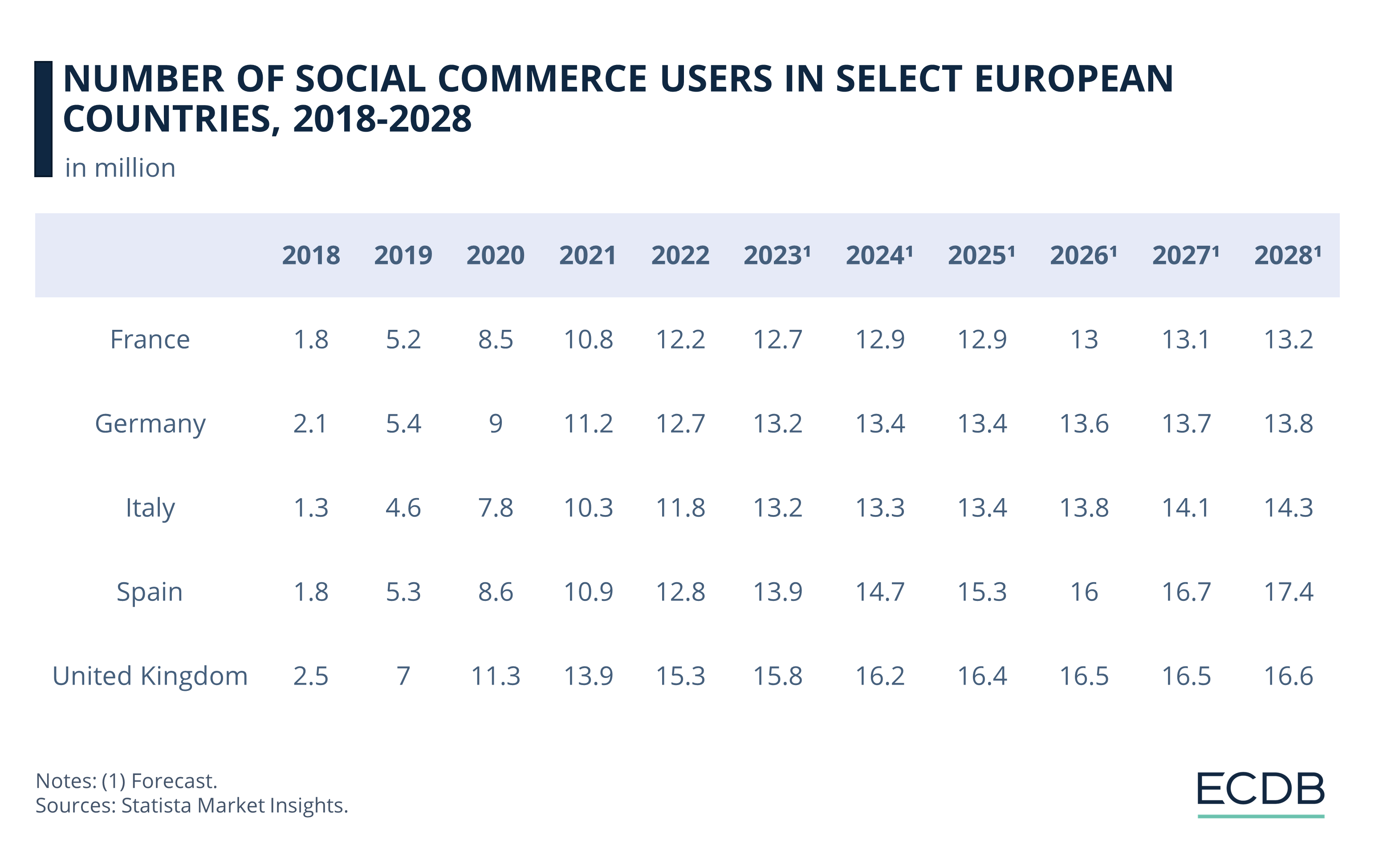Social commerce is an emerging phenomenon that will continue to shape consumer behaviour and fuel online purchases. In the United Kingdom it’s already become big business for eCommerce retailers that have harnessed its potential, and growth from social channels is only expected to rise throughout the course of the decade.
However, as consumers continue to embrace social commerce, what do online retailers need to consider?
We’ve examined the latest social commerce trends and major considerations to provide this in-depth starting point for UK eCommerce owners and operations leaders.
What Is Social Commerce and Does My Business Need It?
Often put forward as the future of eCommerce, ‘social commerce’ is a rapidly-growing consumer experience that allows users to interact and engage with a brand and its products through social media.
Choosing the right platforms and marketplace shipping software, ensuring you have the creative clout to stand out, and a frictionless shopping experience are some of the key factors that will make or break a social commerce strategy, and that’s before mentioning the engine room that sits behind a successful eCommerce business. eCommerce parcel delivery and returns, cross-border shipping, fulfilment and customer service also play a crucial role in the buyer journey.
Across Europe, social commerce revenue is expected to grow from $6.2bn in 2018 to over $44bn by 2027, with new innovations coming every day.
Social Commerce Trends by Age: The 18-34 Club
A sample base of Gen-Z and younger millennials polled by Taluna/Insider Intelligence revealed their destinations of choice for social shopping.
Instagram topped the list of platforms among a group of 18–34-year-olds that had made a social purchase from between September and October 2023. The figures included purchases made either directly on the platform or by clicking a link to a product page with an immediate purchase option.
But at 37.3% of respondents, Instagram only fared marginally better than TikTok (36.1%) and its stablemate, Facebook (34.3%). YouTube (32.8%) rounded off the leading bunch, with Snapchat (24.9%), X/Twitter (15.7%), LinkedIn (11%) and Pinterest (8.9%) lagging behind.
While this highlights platform competition amongst one age group, the battle for social revenue is likely to be far more widespread. According to research from PayPal, nearly half of all UK consumers have made a purchase through social media in the past six months.
Social Commerce Trends by Country: What’s Next for Europe?
Europe has been slower than other regions to embrace social commerce but there remains huge potential for social commerce in the UK market and across the continent.
The 2023 GWI Social Media Trends Report revealed that Europe has witnessed a steady 11% increase in the number of consumers who said they’d used Facebook Marketplace/Instagram Shopping Bag in the last month, highlighting why it’s critical for businesses to utilise online marketplaces.
And, should current revenue projections hold true, the European social commerce market will witness significant growth from its relatively low base.
Underpinning increased revenue will be a rise in social commerce users. Recent Statista Market Insights forecast incremental growth in this category across the UK, France, Germany and Italy.
Meanwhile, Spain’s projected 16.7m social commerce users could surpass the UK’s forecasted figure of 16.5m by 2027.
However, toppling the UK’s position of Europe’s most lucrative eCommerce market will be a tougher assignment.
5 Key Social eCommerce Considerations for Online Retailers
1. Overcoming cultural barriers to social commerce
Europe’s comparatively slow embrace of social commerce is tied into various legal, cultural and behavioural factors across the region. Europeans have typically preferred to use social media for communication and following the news over shopping. Meanwhile, a mature traditional retail market, robust data protection laws and concerns over privacy have shaped European attitudes to buying and selling using social channels.
eCommerce retailers that can provide slick, swift and secure experiences will ultimately build credibility and trust faster than competitors. This will also likely translate into bigger revenues.
2. Building a consistent content and engagement strategy
Engaging content doesn’t magically appear. If you want to stand apart on social media, you’ll need a cohesive plan and the capability to create content on a regular basis, either in-house or via third parties. This might include channel strategy and approach, product marketing and descriptions, influencer marketing and creator partnerships to promote items, combined with paid advertising to maximise reach.
The Retail Technology Show polled 1,000 UK shoppers and found that the average consumer now makes 10 TikTok-inspired purchases per year. Big brands such as Waterstones, WH Smith and Superdrug are already utilising the “Trending on TikTok” functionality to push products and blend the physical and digital shopping experience. Brands that understand the nuance of social platforms and their users are likely to benefit the most from the social commerce boom.
3. Utilising data and insights to craft targeted campaigns
How can you tap into specific audience segments and provide a unique offering to social users? Personalisation has been a hot topic for a while now and eCommerce brands need to be able to meet consumer needs by serving the right content at the right time.
Social media and social commerce grant the ability to niche down and test targeted campaign ideas. Companies that can use data and insights to fine-tune messaging and offers will gain a big advantage against those that adopt a blanket approach.
4. How to create a seamless social shopping experience
How you shape your social shopping experience is arguably one of the biggest challenges to negotiate. For example, should you opt for an on-platform checkout where consumers browse catalogues/products on TikTok or Meta platforms? Or do you direct customers to your owned-channels, thereby creating extra steps in the journey and more friction?
Both options have their potential upsides and downsides. On-platform checkout makes it easier for customers to discover, view recommendations and buy products. However, this method has been described as a “lose-lose” situation with UK businesses preferring to push customers back to their own websites or physical stores.
Utilising social commerce will create some form of trade-off. And you’ll need to decide which option best aligns with your business and customer goals.
5. Managing increased sales
Getting more out the door? Expanding into new markets? Struggling to fulfil orders? You’ll need a hand with that…increased sales is a welcome by-product of social commerce success. But if you’re not equipped to deal with higher order volumes, seasonal peak demands or even increased customer enquiries, you’ll quickly come under pressure.
Choosing a third-party logistics (3PL company) provider capable of offering long-term or on-demand expertise could be beneficial. Not quite at that stage? At a minimum, you should have access to eCommerce logistics solutions that give you and your customers greater choice and control over parcel delivery times and costs.
How Can Whistl Help?
Social commerce is more than a passing trend; it represents another shift in buyer behaviour and the way consumers interact with brands. However, engaging an audience and increasing sales is only one piece of the puzzle - what happens behind the scenes with order fulfilment and delivery management is just as important.
At Whistl, we offer a broad range of services to support your eCommerce business, from pick and pack to parcel delivery and even international logistics. We can handle customer queries as you, send out product samples and even manage any returns.
Get in touch with us to find out how we can help your eCommerce business grow with reliable and efficient eCommerce logistics, powered by expert support.

Andy Underwood, MD - Whistl Parcels
Andy boasts 18+ years' experience in the parcel industry. He's passionate about helping customers simplify their parcel deliveries & returns.
Make an EnquiryShare this article
International Logistics Memberships and Accreditations

Contact us to find out more!
We'll help you find the right courier management software solutions for your business needs.
Call us
We'll call you
Complete our contact form





